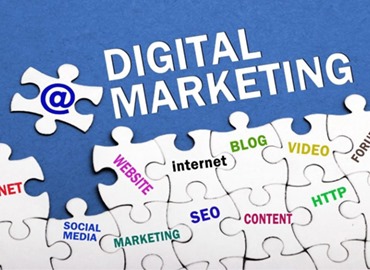Digital marketing refers to the use of digital channels, technologies, and strategies to promote products, services, or brands to consumers. It encompasses a wide range of online activities and techniques aimed at reaching targeted audiences, driving engagement, and generating measurable results.
Key Components of Digital Marketing
1. Search Engine Optimization (SEO):
- Purpose: Improve website visibility in search engine results pages (SERPs).
- Key Strategies:
- Keyword research and optimization.
- On-page SEO: Enhancing meta tags, content structure, and internal linking.
- Off-page SEO: Building backlinks and enhancing domain authority.
- Technical SEO: Ensuring fast loading speed, mobile-friendliness, and secure browsing (HTTPS).
2. Pay-Per-Click Advertising (PPC):
- Purpose: Drive immediate traffic through paid ads.
- Key Platforms: Google Ads, Bing Ads, and social media ad networks.
- Key Features:
- Cost is incurred only when users click on ads.
- Highly targeted based on demographics, location, interests, etc.
- Often used for lead generation and sales.
3. Content Marketing:
- Purpose: Build brand authority and trust through valuable, relevant content.
- Key Formats:
- Blogs and articles.
- Infographics.
- Videos and podcasts.
- E-books and whitepapers.
- Key Channels: Websites, social media, and email.
4. Social Media Marketing:
- Purpose: Engage with audiences on social platforms.
- Key Platforms: Facebook, Instagram, LinkedIn, Twitter, TikTok, and Pinterest.
- Strategies:
- Organic posting and community building.
- Paid advertising for targeted reach.
- Influencer partnerships to amplify brand messaging.
5. Email Marketing:
- Purpose: Nurture leads and build customer loyalty.
- Key Tactics:
- Personalized email campaigns.
- Automated workflows (e.g., welcome emails, abandoned cart reminders).
- Regular newsletters with updates and offers.
6. Affiliate Marketing:
- Purpose: Drive sales through third-party promoters.
- How It Works:
- Affiliates earn commissions for referring customers via unique tracking links.
- Commonly used by e-commerce platforms.
7. Mobile Marketing:
- Purpose: Target audiences on mobile devices.
- Key Channels:
- SMS and push notifications.
- Mobile-optimized websites and apps.
- Location-based marketing (e.g., geotargeting).
8. Analytics and Data Measurement:
- Purpose: Track, analyze, and optimize marketing efforts.
- Key Tools: Google Analytics, SEMrush, HubSpot, and native analytics tools on social platforms.
- Focus Areas:
- Conversion rates.
- Return on investment (ROI).
- Audience behavior and preferences.
Benefits of Digital Marketing
- Cost-Effectiveness: Lower costs compared to traditional marketing.
- Global Reach: Access to audiences worldwide.
- Targeted Marketing: Precise audience segmentation for tailored campaigns.
- Real-Time Performance Tracking: Immediate feedback on campaigns.
- Scalability: Easily adjustable based on budgets and goals.
What one should consider when developing a digital marketing strategy
- Digital goals: What does the business want to achieve through digital marketing?
- Digital audiences: Who is the target audience?
- Digital platforms: Which platforms will be used?
- Digital media: What types of media will be used?
- Digital data: How will data be collected and analyzed?
- Digital technology: What technology will be used
Challenges in Digital Marketing
- Staying updated with ever-changing algorithms and trends.
- High competition in digital ad spaces.
- Balancing personalization with data privacy concerns.
- Measuring ROI accurately for certain strategies.





